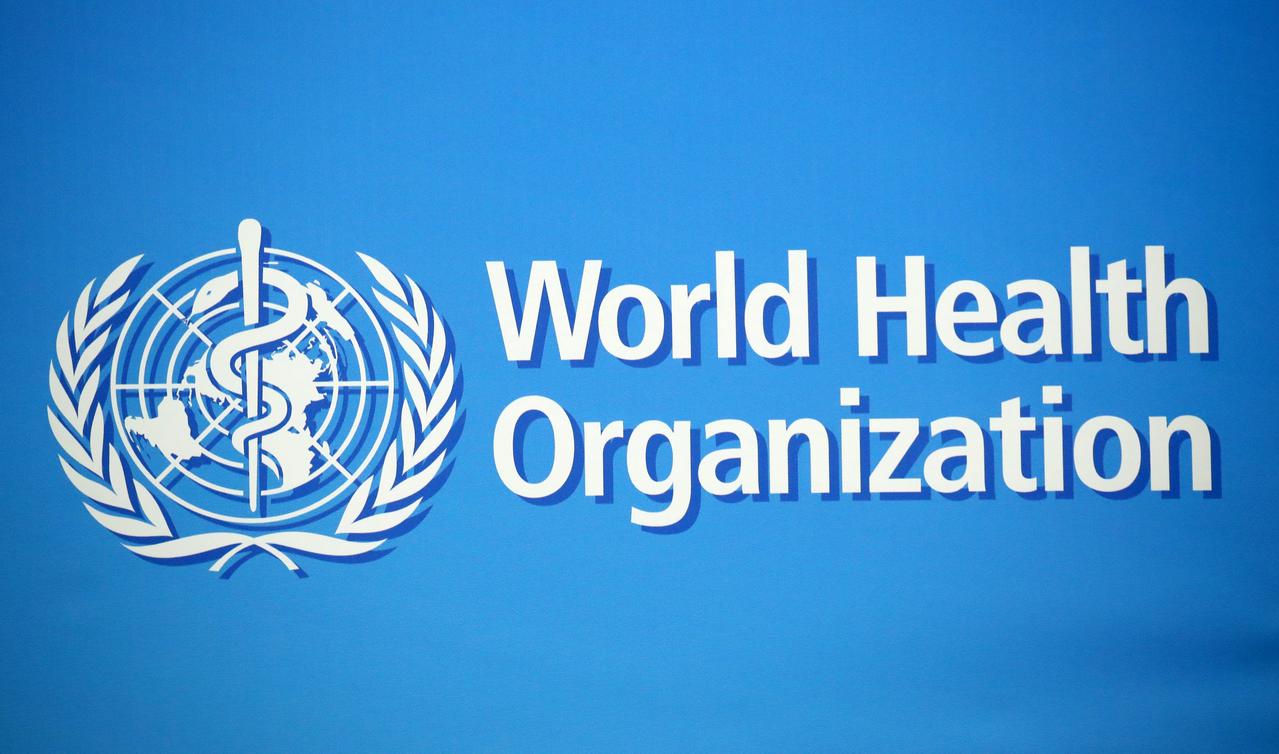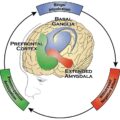According to the WHO Lexicon of alcohol and drug addiction, drug or alcohol addiction is the repeated use of a psychoactive substance or substances, to the extent that the user (referred to as an addict) is periodically or chronically intoxicated, shows a compulsion to take the preferred substance (or substances), has great difficulty in voluntarily ceasing or modifying substance use, and exhibits determination to obtain psychoactive substances by almost any means. Typically, tolerance is prominent and a withdrawal syndrome frequently occurs when substance use is interrupted. The life of the addict may be dominated by substance use to the virtual exclusion of all other activities and responsibilities. The term addiction also conveys the sense that such substance use has a detrimental effect on society, as well as on the individual; when applied to the use of alcohol, it is equivalent to alcoholism. Addiction is a term of long-standing and variable usage. It is regarded by many as a discrete disease entity, a debilitating disorder rooted in the pharmacological effects of the drug, which is remorselessly progressive. From the 1920s to the 1960s, attempts were made to differentiate between addiction; and “habituation”, a less severe form of psychological adaptation. In the 1960s, the World Health Organization recommended that both terms be abandoned in favor of dependence, which can exist in various degrees of severity. Addiction is not a diagnostic term in ICD-10 but continues to be very widely employed by professionals and the general public alike.
Expanded Definition
The term “addiction” can mean many things to many people. For our purposes we define addiction as follows:
Addiction is the repeated involvement with a substance or activity, despite the substantial harm it now causes, because that involvement was (and may continue to be) pleasurable and/or valuable.
The reader should not confuse this definition of addiction with other related terms. Although similar, this definition of addiction should not be confused with the diagnostic criteria for a category of disorders known as Substance-Related and Addictive Disorders (APA, 2013). The four key parts to this definition of addiction:
- Addiction includes both substances and activities (such as sex and gambling).
- Addiction leads to substantial harm.
- Addiction is repeated involvement despite substantial harm.
- Addiction continues because it was, or is, pleasurable and/or valuable.
Now let’s examine each part of this definition of addiction in greater detail.
- Definition of Addiction includes both substances and activities
Definition of addiction: Addiction is repeated involvement with a substance or activity, despite the substantial harm it now causes, because that involvement was (and may continue to be) pleasurable and/or valuable. The definition of addiction includes four key parts. In this section, we discuss the first part of the definition: people may become addicted to both substances and activities. Substance addiction includes any substances that are taken into the body. This may include street drugs, nicotine; and some prescription medications when used improperly. An activity addiction includes activities such as gambling, sex, the internet, pornography, and shopping. Sometimes people call these “process addictions.” Notice that it is quite possible to live a full and satisfying life without using any of these substances, or activities. However, there are also substances and activities that are essential to our very survival and even these things can become addictions. For instance, obese people often describe food as a type of addictive substance but clearly, no one can live without food. Other people describe romantic relationships with a dependency so deep and damaging that their relationship could represent an addictive activity.
Obviously many people engage with these substances and activities at various times in their lives. Most do not develop any significant problems or difficulties. This leads to the question, “At what point does an activity or substance use become an addiction? The rest of our definition helps to answer, “Where’s the line between ‘behaving badly’ and addiction?”
- Definition of Addiction includes substantial harm.
Definition of addiction: Addiction is repeated involvement with a substance or activity, despite the substantial harm it now causes, because that involvement was (and may continue to be) pleasurable and/or valuable. The definition of addiction includes four key parts. In this section, we discuss the second part of the definition: substantial harm. The most commonly agreed-upon part of any definition of addiction is that it leads to substantial harm. Addiction harms not only the person with the addiction but also everyone around them. When distinguishing between “bad behavior” and addiction, the primary consideration is: Has the behavior caused substantial harm? In other words, what are the negative consequences of that behavior? If I buy two beers at a bar every week, even expensive beer, it won’t create a financial disaster. I might not be able to afford going out to lunch with my co-workers. It’s just a choice I’m willing to make. I haven’t sacrificed too much. On the other hand, if I buy 20 beers a night, every night, that creates a substantial financial burden. I might not even be able to afford my groceries, much less lunch with my co-workers. The odds are good that I might not be able to keep my job either! Similarly, depending upon your own personal values, occasionally looking at porn probably doesn’t cause substantial harm to most people. But if someone begins to prefer porn over human contact or cannot enjoy sex without porn, and starts to spend half their income on purchasing porn, they start to meet the criteria for substantial harm.
One way to understand “substantial harm” is to consider the harmful consequences of the activity or substance use. Let’s call these consequences costs. Some costs are obvious. They arise directly from the substance or activity itself. There are also other, less-obvious costs. These occur because of the preoccupation with the addiction. Direct costs may be unique to the specific substance or activity itself. If you snort enough cocaine you will damage your nose. If you drink enough alcohol you will damage your digestive system. If you watch porn all day, you will lose interest in real sexual partners. If you shoot up enough heroin you will damage your veins. If you gamble a lot, you will lose a great deal of money. Some direct costs universally apply to most addictions: declining health, damage to interpersonal relationships, and diminishing financial resources. The less-obvious, indirect costs arise solely from the preoccupation with addiction. Eventually, an addiction becomes so central in a person’s life that it consumes all their time, energy, and preoccupies their thoughts.
Sometimes individuals affected by addiction do not readily see that their involvement with a substance or activity has resulted in substantial harm. Therefore, they may “deny” they have an addiction. Of course, this “denial” makes perfect sense because substantial harm is a defining characteristic of addiction. Without it, there is no addiction. However, to other people, these individuals seem indifferent to the harm their addiction causes. In response to this apparent lack of concern, these individuals are often told they are “in denial.” This statement implies a form of dishonesty. We have never found accusations of this sort to be helpful. A more useful approach is to recognize many individuals are simply unaware of the total costs associated with their addiction. This recognition leads to a non-judgmental approach that encourages an honest and accurate appraisal of these costs. This helps people recognize the substantial harm caused by remaining involved with an addictive substance or activity.
- Definition of Addiction includes repeated involvement despite substantial harm.
The definition of addiction: Addiction is repeated involvement with a substance or activity, despite the substantial harm it now causes, because that involvement was (and may continue to be) pleasurable and/or valuable. The definition of addiction includes four key parts. In this section, we discuss the third part of the definition: repeated involvement despite substantial harm. You could experience significant negative consequences (“substantial harm”) from substance use or activity but we probably would not label your behavior an addiction unless it happened regularly. For instance, the first time someone gets drunk they might have a serious car accident. We would probably not label the person an alcoholic, even though “substantial harm” occurred. Or let’s imagine that your son, age 28, gets drunk at his younger sister’s wedding. He throws up on the wedding cake. He calls his sister a whore. He drops Aunt Sally on the floor while he’s dancing with her. Next, he proceeds to pass out on the dance floor. For the five years before this wedding day debacle, he consumed no more than 1-2 drinks, a few times a month. Are you ready to call him an alcoholic? Probably not. Are you upset? You might be very upset! It becomes evident that addiction refers to a repeated behavior despite negative consequences.
Ordinarily, once the costs of an enjoyable behavior pile up, people will begin to naturally restrict or quit that behavior. This is another fact that distinguishes addictive behavior, from merely “bad behavior.” Many people temporarily indulge in pleasurable activities that we might term “bad behavior.” These may include drinking, drugging, indiscriminate sex, gambling, excessive consumption of entertainment, and overeating. All addictions begin in this rather normal realm of the pursuit of pleasure. The problems of addiction do not develop because of these pleasurable activities. Addiction becomes evident when someone seems to be unable to limit or stop these pleasurable activities. They seemingly demonstrate a “loss of control.” Thus, the problem of addiction is not that someone enjoys these pleasures. The problem of addiction is that they cannot seem to stop.
Imagine that someone goes gambling for the first time. Win or lose, it’s fun. Sometimes it’s very fun. Not too much money gets spent. The experience is affordable, relative to that person’s income. What’s the harm in that? Now let’s imagine that same person goes to a casino again, planning to spend $100 dollars, just as they did the first time. However, this time they keep getting credit card cash advances for much more than they can afford. By the end of the evening, they blew their entire paycheck. They may feel a lot of remorse and regret about what happened. Most people would not wish to repeat that experience, and thankfully most do not. However, people who develop addiction will repeat that experience and return to the casino, spending more than they can afford. This occurs despite the commitments to themselves or to others to “never to do that again.” This quality of addiction bears further explanation.
As someone’s addiction progresses (gets worse), that person feels “out-of-control” or “powerless” over their own behavior. Despite their best intentions to remain in control of their behavior, there are repeated episodes with more negative consequences. Sometimes the person is aware of this reduced control. Other times they may deceive themselves about how easy it would be to quit “anytime I want to.” Ultimately everyone must make their own decision about whether to change a particular behavior. But, the requirements for making changes to our behavior are frequently under-estimated. They often require a great deal more effort and determination than someone realizes.
Family and friends are less easily deceived. These episodes of reduced control are more obvious to other people. Family and friends often wonder, “Well since you seem to believe you can control this behavior, why don’t you?!” A person in a relationship with someone who is developing an addiction can feel betrayed. Their loved one seems so different. Their “choices” seem to be incompatible with their usual goals, commitments, and values. If a close friend or family member attempts to address this pattern (“Don’t you realize you have a major problem and you need to quit?!”) the result can just as easily become a major argument rather than a major change of behavior. People with addictive problems are rather adept at turning the tables and blaming others. “I wouldn’t have to drink so much if you weren’t such a nag.” Instead of admitting a problem exists, a person developing an addiction may deny the existence of any problems. On the other hand, they may suggest their “complaining” partner exaggerated the problem, or even caused the problem. It is often difficult to determine whether people genuinely believe these ideas, or are simply unwilling to face the frightening thought that they might have a problem.
In some cases, there may be sincere regret followed by a promise to change. After enough broken promises to change, promises are no longer believable. Family and friends settle into expecting the worst and trying to live with it. Alternatively, they may actively express their legitimate anger and frustration. The arguments and tension can be severe.
- Definition of Addiction includes pleasure and/or value.
The definition of addiction: Addiction is repeated involvement with a substance or activity, despite the substantial harm it now causes, because that involvement was (and may continue to be) pleasurable and/or valuable. The definition of addiction includes four key parts. In this section, we discuss the fourth part of the definition: pleasure and/or value. You might begin to wonder why they begin in the first place. Why would someone want to do something that brings about harm? The answer is deceivingly simple: because at first, it was pleasurable, or at least valuable. The addicted person might find it “valuable” because it reduced anxiety. Maybe it provided a temporary escape from dismal circumstances or sheer boredom. Perhaps it helped to briefly relieve depression. In fact, people are genetically predisposed to repeat things that are rewarding or bring about pleasure as this ensures our very survival. Without this genetic predisposition, we would not eat or reproduce.
Therefore, only individuals with prior positive experiences with a substance or activity are vulnerable to developing an addiction. If you smoke pot a few times, and every time it makes you highly anxious and paranoid, you probably would not keep smoking. If you dislike the taste of alcohol and how it makes you feel, will you continue to drink? So, addiction begins because “it” was once pleasurable, rewarding, or valuable.
Notice our definition includes the concept that the substance or activity may no longer be pleasurable and/or valuable. In fact, over time many addictions become very unpleasant. Despite this fact, what usually remains pleasurable, valuable, and rewarding is the release from the powerful cravings that develop. Sometimes this is called cravings-use-pleasure-rest cycle. SEE: The Life and Times Of Dr. Herbert Kleber






